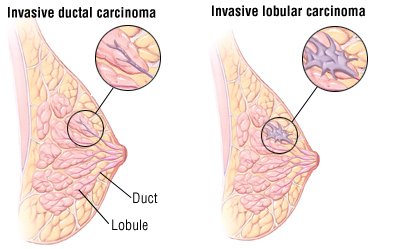Women with breast cancer may overestimate secondary risks
Young women with breast cancer often overestimate both their chance of developing cancer in the other breast and how much removal of that breast is likely to protect them, a new U.S. study suggests.
In a survey of women diagnosed with cancer in one breast between ages 26 and 40 who chose to have a double mastectomy, almost all said a desire to extend their life was a very important part of the decision.
However, evidence shows removing the cancer-free breast does not improve survival rates, the study’s lead author said.
“For some women it might be the right decision, but you want to make sure they’re making the decision based on the correct information,” Shoshana M. Rosenberg, from the Susan F. Smith Center for Women’s Cancers at the Dana-Farber Cancer Institute in Boston, told Reuters Health.
Among women with early-stage breast cancer who do not have genetic mutations that increase their risk, past research has found the chance of developing cancer in the second breast to be between 2 and 4 percent over five years.
Although mastectomy does reduce the chance of a second cancer in the breast, a much bigger concern is the risk of developing metastatic disease as a result of the original cancer, Rosenberg said.
Removing the second breast does not affect the risk of the original cancer spreading elsewhere in the body, she added, and thus isn’t likely to prolong a woman’s life.
 More and more women with breast cancer are having both breasts removed, Rosenberg noted, and the trend is most pronounced in young women. To see why that might be, she and her colleagues sent surveys to 123 young women who had opted for double mastectomy, an average of two years after their surgery.
More and more women with breast cancer are having both breasts removed, Rosenberg noted, and the trend is most pronounced in young women. To see why that might be, she and her colleagues sent surveys to 123 young women who had opted for double mastectomy, an average of two years after their surgery.
Of those women, 94 percent said the desire to extend the length of life was a “very” or “extremely” important factor in their decision to have both breasts removed.
Women without the BRCA1 or BRCA2 genetic mutations believed about 10 percent of women in their situation would develop a second breast cancer over 5 years.
Survey participants “vastly overestimated their risk,” according to Rosenberg.
Still, the majority of them answered correctly that most women with early-stage breast cancer will die of something else. And less than one in five believed women with breast cancer who have both breasts removed live longer than those who don’t, the study team reported in the Annals of Internal Medicine.
“Obviously, when they’re making this decision it’s a very anxious time, especially in younger women,” Rosenberg said.
About one in eight U.S. women will be diagnosed with breast cancer during her lifetime. According to a recent study, one in 173 will get the disease before age 40.
Rosenberg said many women who have a double mastectomy undergo breast reconstruction, which can involve extensive surgery and long recovery times and carries a risk of complications.
“The complications are almost never life-threatening, but they can certainly compromise a patient’s health,” Dr. Todd Tuttle, a surgical oncologist at the University of Minnesota Medical Center’s Breast Center in Minneapolis, said. For example, some women get infections, or have wounds that don’t heal.
Tuttle, who wrote a commentary published with the new study, said mastectomy and reconstruction also “may potentially delay any other therapies that are recommended to treat their original breast cancer.”
He told Reuters Health that “hyperawareness” about breast cancer in the U.S. may contribute to women overestimating their cancer-related risks and the benefits of a double mastectomy. In Europe, he said, there has not been the same increase in rates of normal-breast mastectomy among women with cancer.
Tuttle agreed with Rosenberg that some women may have good reasons for wanting both breasts removed, but that they should be fully informed before making that decision.
“Physicians need to take the time to talk to their patients about what their risk of getting cancer is in that opposite breast,” he said. “Having that normal breast removed will not improve their survival.”
SOURCE: Annals of Internal Medicine, online September 16, 2013.